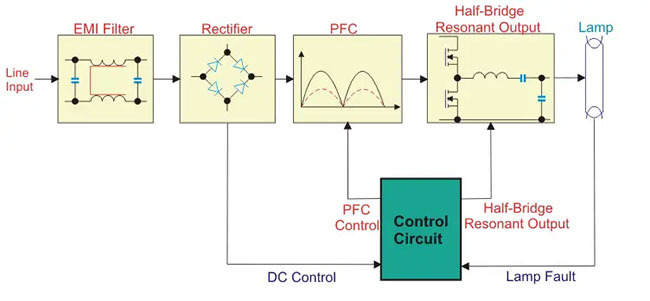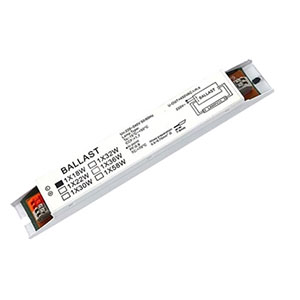What is an Electronic Ballast?
Electronic ballast is an electronic device used to regulate current, widely applied in fields such as lighting, power electronics, and industrial control. It provides stable current output, protects circuits and fixtures, and enhances energy efficiency. In this article, ATO industrial automation will elaborate on the structure, working principles, and related knowledge of electronic ballasts.
Structure of Electronic Ballast
- Rectifier: Electronic ballasts use rectifiers to convert alternating current into direct current, meeting the operational requirements of gas discharge lamps. Rectifiers typically employ devices like rectifier bridges or bidirectional switches.
- Current Controller: The current controller is the most crucial part of electronic ballasts. It ensures stable operation of gas discharge lamps by controlling the size and shape of the current. Power electronic devices (such as MOSFET or IGBT) and modulation techniques (like pulse width modulation) are commonly used in current controllers.
- Output Filter: The output filter is used to filter high-frequency noise from the output current, providing stable output voltage and current to gas discharge lamps.
Working Principles of Electronic Ballast
The main working principle of an electronic ballast involves regulating and controlling current through electronic components. It converts AC power into DC power and adjusts the current by controlling the waveform and frequency.
- Current Rectification and Filtering:
Electronic ballasts initially convert AC power into DC power. They use rectifier circuits to transform the waveform of AC power into direct current. Then, a filtering circuit removes ripples from the DC current to obtain a stable DC power source. - Current Regulation and Control:
Electronic ballasts control the size of the output current by adjusting the waveform and frequency of the current. Switching circuits and control circuits are employed for current regulation. Switching circuits may include thyristors, MOSFETs, or other switching elements. The control circuit adjusts the output current size by controlling the switching time and frequency of the switching circuit. - Protection Circuit:
Electronic ballasts are equipped with various protection circuits to safeguard circuits and fixtures from damage caused by abnormal conditions such as overcurrent, overvoltage, and short circuits. These protection circuits enhance the reliability and safety of electronic ballasts.
Advantages and Applications of Electronic Ballast
- Energy Efficiency:
Compared to traditional inductive ballasts, electronic ballasts have higher energy efficiency. They improve energy utilization by adjusting the waveform and frequency of the current, reducing energy waste. - Stability and Reliability:
Electronic ballasts provide stable current output unaffected by fluctuations in the power grid. They also include multiple protection circuits, effectively safeguarding circuits and fixtures, extending their lifespan. - Excellent Dimming Performance:
Electronic ballasts can achieve dimming control of fixtures. By adjusting the waveform and frequency of the current, brightness control of lighting can be achieved, meeting various illumination requirements in different scenarios. - Wide Applications:
Electronic ballasts find extensive applications in lighting, power electronics, and industrial control. In the lighting sector, they are commonly used in the drive circuits of LED fixtures, fluorescent lamps, and high-pressure sodium lamps. In power electronics, they can be used in power converters, motor drives, and power supply equipment. In industrial control, they find use in industrial automation systems and robotics.
Trends in the Development of Electronic Ballasts
- High Efficiency and Energy Saving:
With increasing concerns about energy scarcity and environmental pollution, the energy-saving performance of electronic ballasts will be a key focus of development. Future electronic ballasts will emphasize higher energy utilization efficiency, reducing energy waste. - Intelligent Control:

With the rise of smart homes and intelligent lighting, electronic ballasts will develop in the direction of intelligence. Future electronic ballasts will have smart control functions, allowing for remote control and intelligent adjustment of fixtures through wireless communication and sensor technologies. - Miniaturization and Integration:
Future electronic ballasts will trend toward miniaturization and integration. With the continuous progress of electronic components and integrated circuit technology, the volume of electronic ballasts will be smaller, and their functionality will become more powerful.
Electronic ballasts are electronic devices used to regulate current by adjusting and controlling the current through electronic components. They offer advantages such as energy efficiency, stability, reliability, and good dimming performance. They are widely used in lighting, power electronics, and industrial control fields. The future development of electronic ballasts will focus on energy efficiency, intelligent control, miniaturization, and integration. The evolution of electronic ballasts will bring more opportunities and challenges in the areas of energy conservation, emission reduction, and intelligent lighting.

